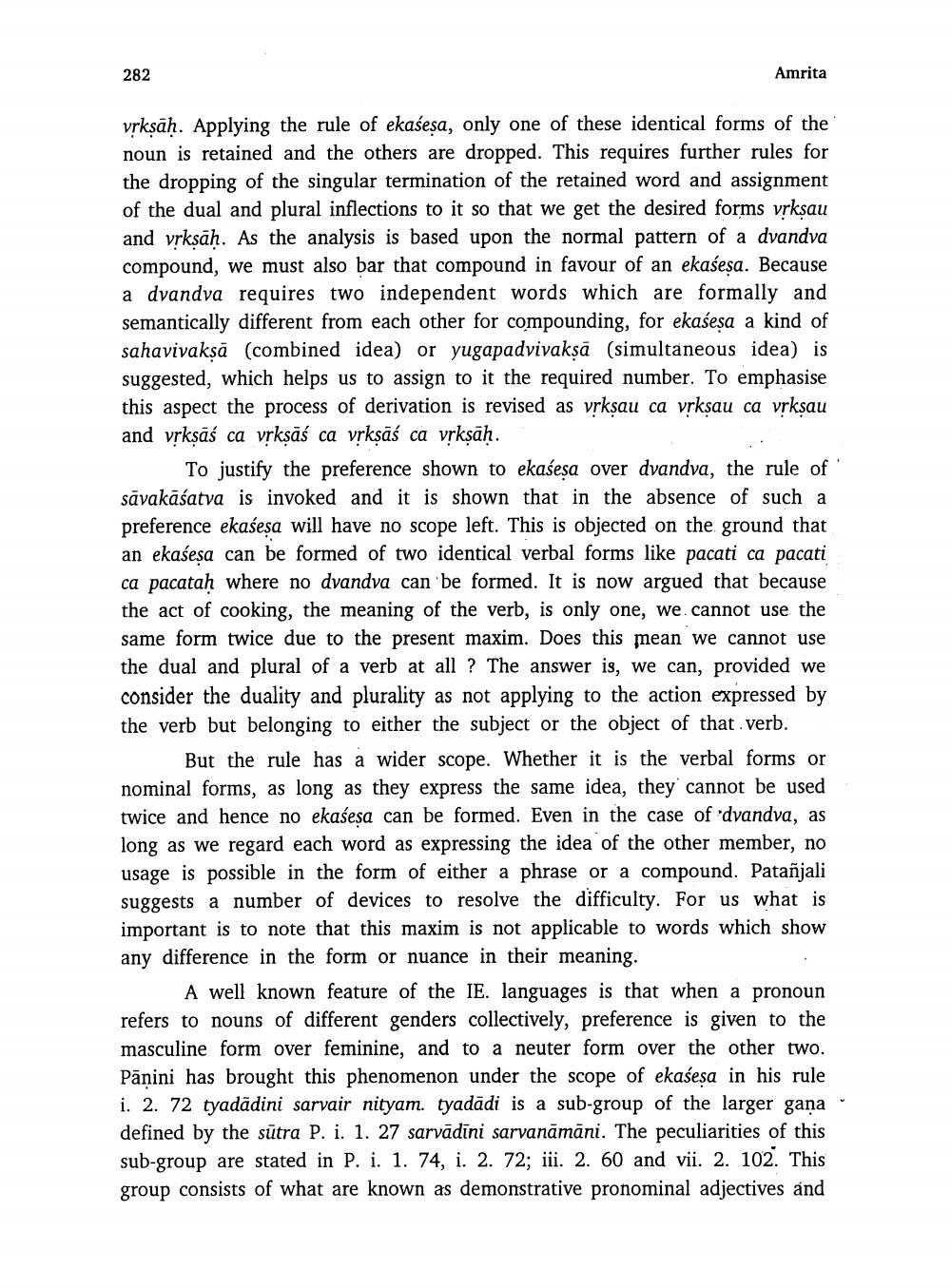________________
282
Amrita
vrksāh. Applying the rule of ekaśesa, only one of these identical forms of the noun is retained and the others are dropped. This requires further rules for the dropping of the singular termination of the retained word and assignment of the dual and plural inflections to it so that we get the desired forms yrksau and vrksah. As the analysis is based upon the normal pattern of a dvandva compound, we must also bar that compound in favour of an ekabesa. Because a dvandva requires two independent words which are formally and semantically different from each other for compounding, for ekaśesa a kind of sahavivaksā (combined idea) or yugapadvivaksā (simultaneous idea) is suggested, which helps us to assign to it the required number. To emphasise this aspect the process of derivation is revised as vrksau ca vrksau ca vrksau and vrkṣāś ca vrkṣāś ca vrkṣāś ca vrkṣāḥ. .
To justify the preference shown to ekaśesa over dvandva, the rule of sāvakāśatva is invoked and it is shown that in the absence of such a preference ekaśeșa will have no scope left. This is objected on the ground that an ekaśesa can be formed of two identical verbal forms like pacati ca pacati ca pacatah where no dvandva can be formed. It is now argued that because the act of cooking, the meaning of the verb, is only one, we cannot use the same form twice due to the present maxim. Does this mean we cannot use the dual and plural of a verb at all? The answer is, we can, provided we consider the duality and plurality as not applying to the action expressed by the verb but belonging to either the subject or the object of that. verb.
But the rule has a wider scope. Whether it is the verbal forms or nominal forms, as long as they express the same idea, they cannot be used twice and hence no ekaśesa can be formed. Even in the case of 'dvandva, as long as we regard each word as expressing the idea of the other member, no usage is possible in the form of either a phrase or a compound. Patañjali suggests a number of devices to resolve the difficulty. For us what is important is to note that this maxim is not applicable to words which show any difference in the form or nuance in their meaning.
A well known feature of the IE. languages is that when a pronoun refers to nouns of different genders collectively, preference is given to the masculine form over feminine, and to a neuter form over the other two. Pānini has brought this phenomenon under the scope of ekaśesa in his rule i. 2. 72 tyadādini sarvair nityam. tyadādi is a sub-group of the larger gana defined by the sūtra P. i. 1. 27 sarvādīni sarvanāmāni. The peculiarities of this sub-group are stated in P. i. 1. 74, i. 2. 72; iii. 2. 60 and vii. 2. 102. This group consists of what are known as demonstrative pronominal adjectives and




